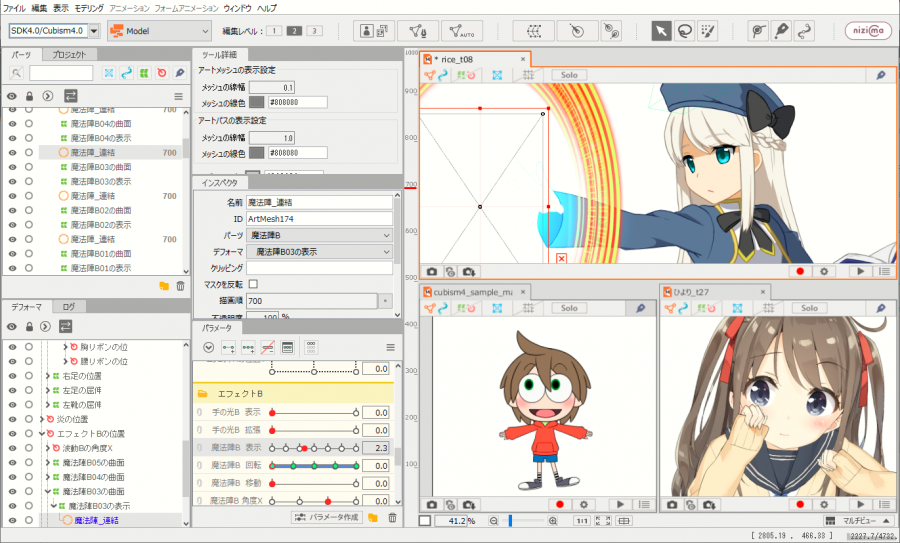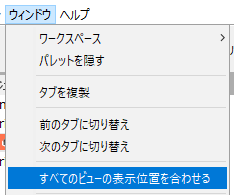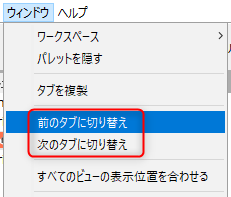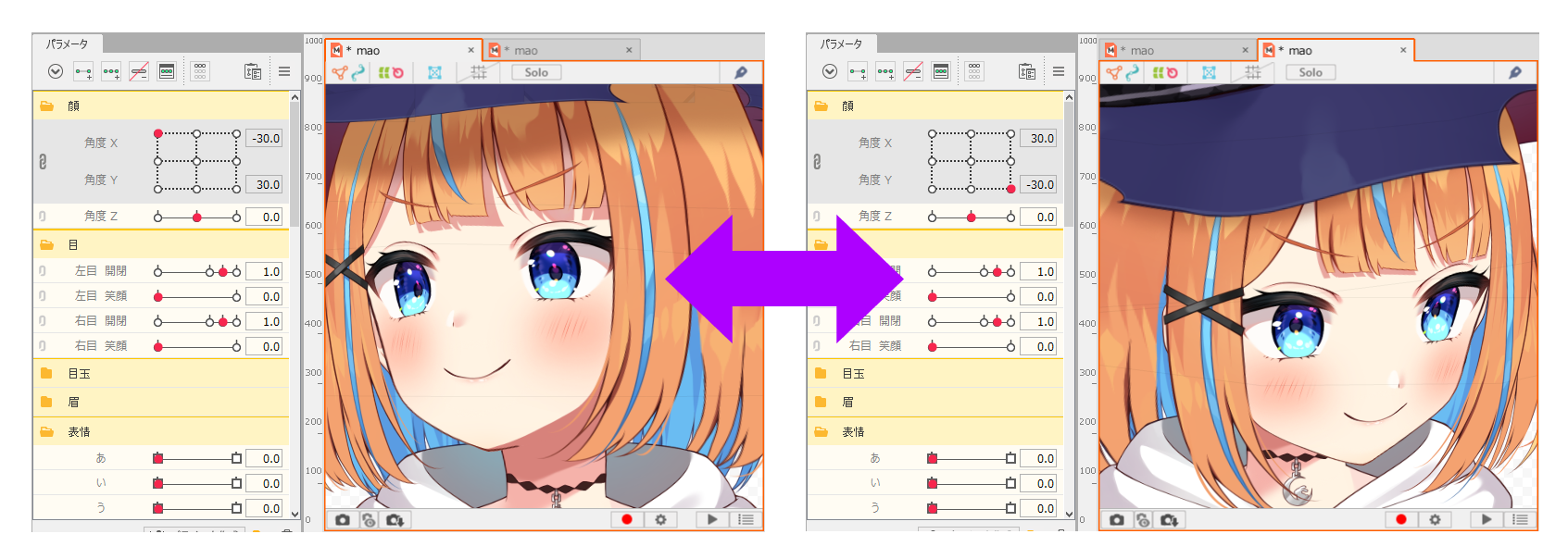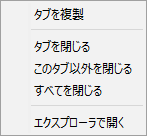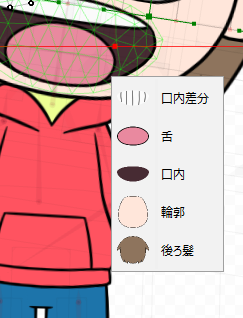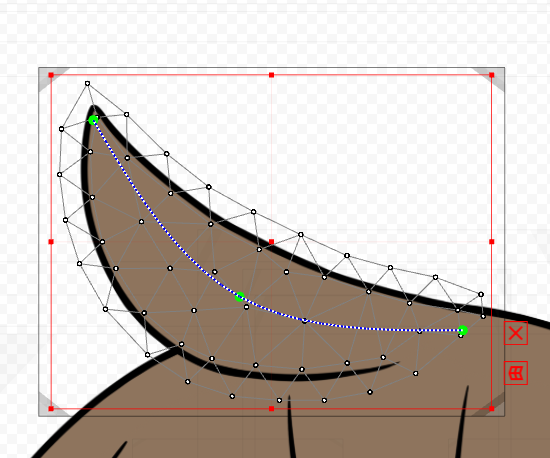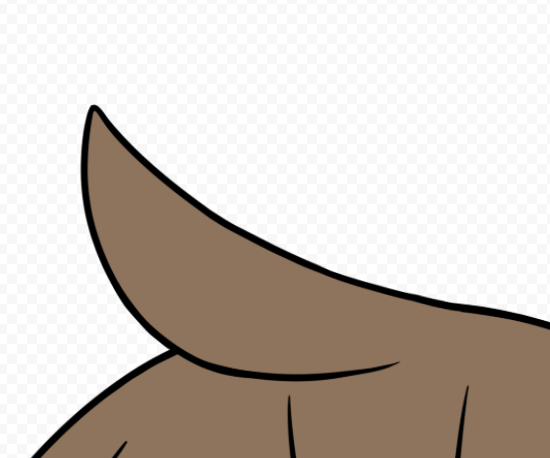About the View Area
Updated: 05/19/2022
The View area is the area where the Live2D model is displayed.
Used to select and place ArtMesh on the canvas and to move meshes and deformers.
About View
Views can be broadly classified into the following types.
Modeling View
Used to transform objects and create keyforms.
Editing ArtMeshes and creating parameters are also done in this View.
Animation View
Used to create scenes and keyframe motion on the timeline.
Load a model file and create an animation by moving the parameters you set.
Form Animation (FA) View
Used to create form animations.
Form Animation is the function to edit a shape (form) directly on the animation editing timeline without affecting the model data.
The Cubism Editor has an appropriate workspace for each View.
See the “Workspaces” page for more information on workspaces.
View Area Functions
This section describes each function within the View area.
A. Modeling View
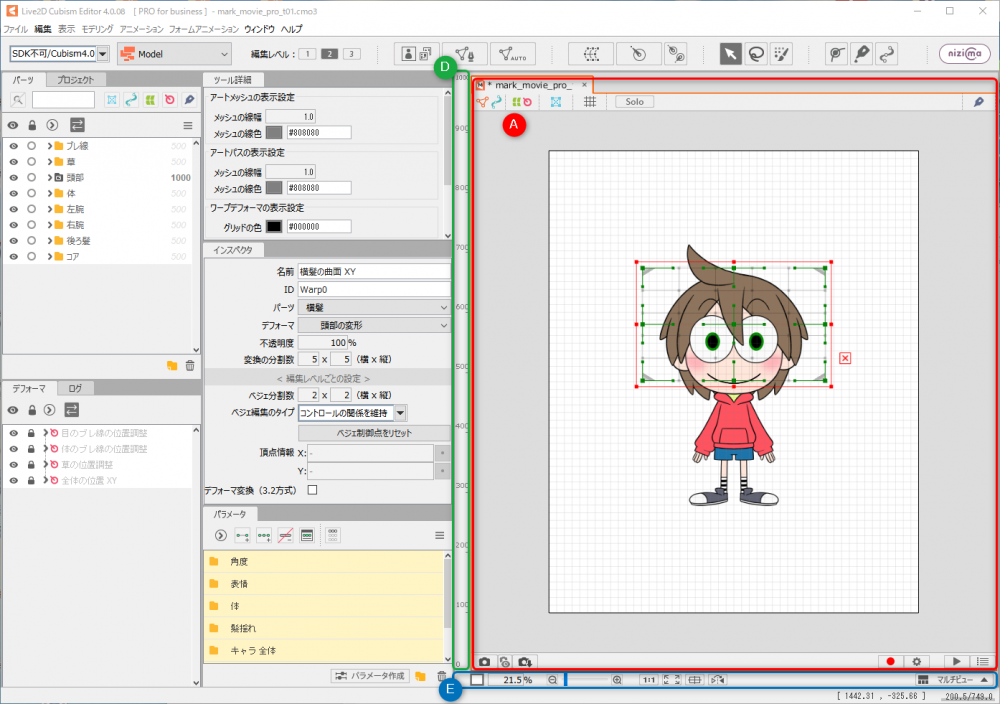
Please refer to the respective explanations for D/E at the bottom of this page.

| Number | Details |
| (1) |
[About tabs]
|
| (2) | Delete tabs: Click the [X] button at the right end of a tab to delete the currently selected tab. |

| Number | Details |
|---|---|
(1) | Lock drawable objects: Only meshes can be shown/hidden and locked on the View. Objects are displayed as they are. The drawable objects are [ArtMesh] and [ArtPath]. |
(2) | Lock deformers: Only deformers can be shown/hidden and locked on the View. |
(3) | Show/hide drawing objects: Drawable objects can be shown/hidden and locked on the View. |
(4) | Show/hide grid: Grid can be switched between being shown or hidden. |
(5) | Solo: Selected objects can be displayed by themselves. |
(6) | Switch glue on/off: The glue can be used to temporarily release or reconnect the glued (bound) state. |

| Number | Details |
|---|---|
(1) | Snapshot: Memorize the keyform image of the current value in semi-transparent form. One snapshot can be saved. |
(2) | Show/hide snapshots: Snapshots can be switched between being shown or hidden. |
(3) | Save snapshots: Save the snapshot as an image in the Parts palette. |
(4) | Record button: Clicking the Record button displays “Recording…” in the lower right corner in the View, and the parameters you moved during that time are saved as keyframes. (Motion during random poses can also be saved as keyframes.) |
(5) | [Recording Settings] You can select where to add scenes generated by the [Record] function. 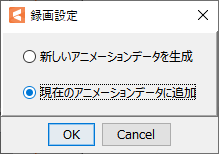 Generate new animation data: Create new animation data (can3). Add to current animation data: Add a scene to the animation data (can3) currently associated with it. |
(6) | Random pose: Randomly moves multiple parameters. Movement patterns can be selected from (7) [Random Pose menu]. See the “Random Pose” page for details. |
(7) | Random Pose menu: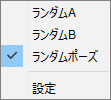 Select a pattern to move randomly. The parameter you want to move can also be selected from [Setting]. See the “Random Pose” page for details. Note: Random Pose, Random A, and Random B can be played in the [Physics and Scene Blend] dialog box. |
B. Animation View
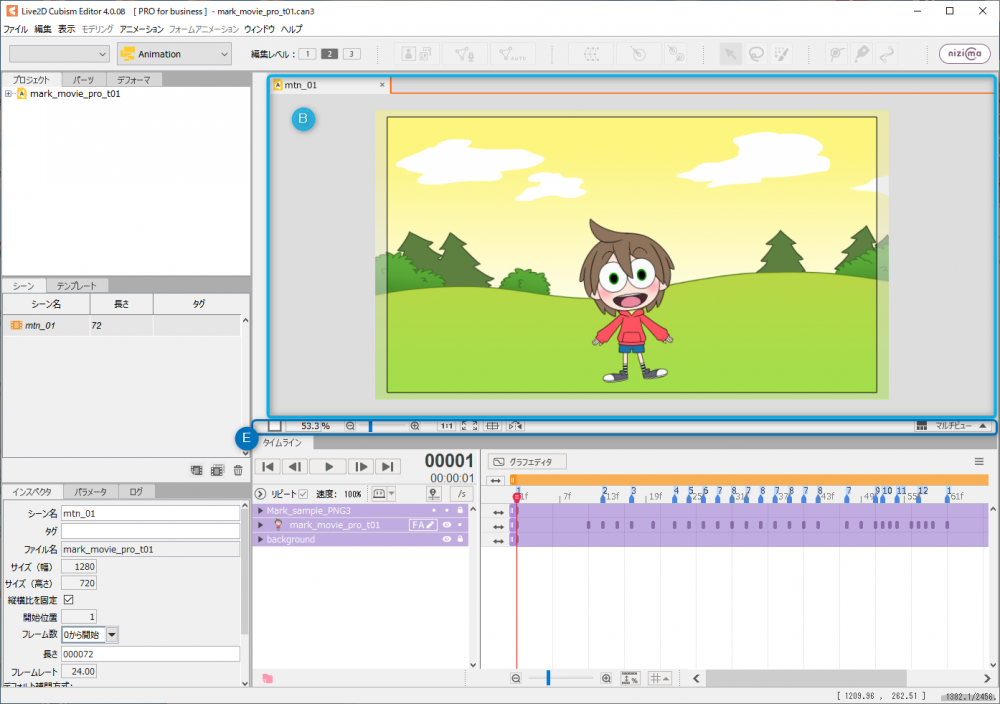
See the respective descriptions at the bottom of the page for an explanation of E.
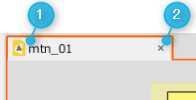
| Number | Details |
|---|---|
| (1) | Tab: Note: “About Tabs” and “About Tab Menu” are the same as for the Modeling View. |
| (2) | Delete tabs: Click the [X] button at the right end of the tab to delete the tab. |
C. Form Animation (FA) View
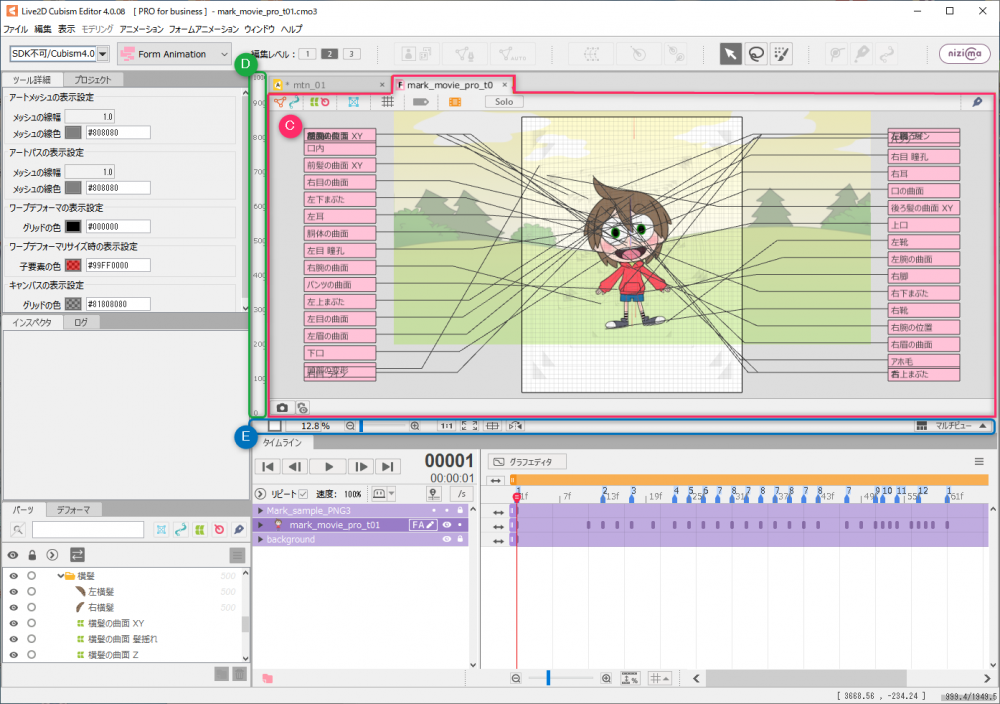
Please refer to the respective explanations for D/E at the bottom of this page.
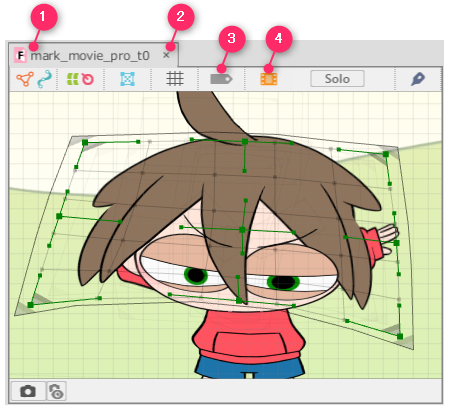
| Number | Details |
|---|---|
| (1) | Tab: Note: “About Tabs” and “About Tab Menu” are the same as for the Modeling View. |
| (2) | Delete tabs: Click the [X] button at the right end of the tab to delete the tab. |
(3) | Label: Labels of form-edited objects can be switched between being shown or hidden. |
(4) | Show/hide animation previews: Animation previews can be switched between being shown or hidden. |
D. Draw order slider for drawable objects

| Number | Details |
|---|---|
| (1) | Draw order slider: When a drawable object or part is selected, a bar indicating the draw order is displayed on the draw order slider. The draw order can be changed by dragging the bar. 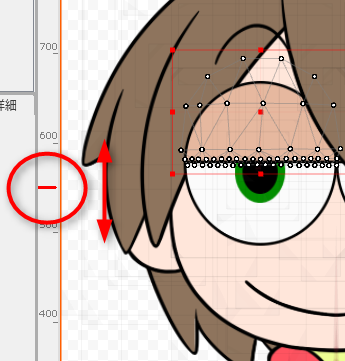 |
| (2) | When a drawable object is selected, the bar is displayed in red. |
| (3) | When a part is selected, the bar is displayed in yellow. |
| (4) | When a draw order group is selected, the bar is displayed in black. |
See the “About Draw Order” page for more information on how to set the draw order for drawable objects.
E. View control

| Number | Details |
|---|---|
(1) | Change background color: You can change or adjust the background color and opacity of the canvas in the View. |
(2) | Numerical control of display magnification: The size can be specified by entering a numerical value or by dragging left or right. |
(3) | Expansion and contraction slider: The drawing magnification can be adjusted from “2” to “3200.” Clicking the [-] and [+] icons on either side of the screen allows you to zoom in and out in steps. |
(4) | Display in full scale: The image can be displayed in its original size at the time of PSD import. |
(5) | Display all: The entire canvas can be displayed. |
(6) | Focus display: The selected object appears in the center of the View. |
(7) | Canvas inversion: Flip the canvas left or right. |
(8) | Multiview settings: You can select the layout for split views. |
(9) | Divider: Drag this area to change the screen size as desired. |
Basic Operation of View Area
| Operation | Details | ||||
| Mouse wheel scroll | The canvas expands and contracts. Use [Ctrl] + [Space] + [drag] to zoom in or out by 1%. |
||||
| [Space] + [drag] | The canvas can be moved. | ||||
| [Space] + [Shift] + [drag] | The canvas can be moved in a direction that is parallel to the direction in which the canvas was first moved. | ||||
| [Ctrl] + [Space] + [drag] | The canvas can be expanded or contracted. | ||||
| [R] | The canvas can be flipped left or right. | ||||
| [R] + [drag] | The canvas can be rotated. | ||||
| [R] + [Shift] + [drag] | The canvas can be rotated in a grid. | ||||
| [R] + [double-click] | The canvas rotation can be reset to 0°. | ||||
| [Ctrl] + [0] | The canvas can be displayed in its entirety. Note: Use this to reset a canvas that has been scaled or rotated. |
||||
| Object selection | Click on an object to select it. [Shift] + [click] selects multiple drawable objects. 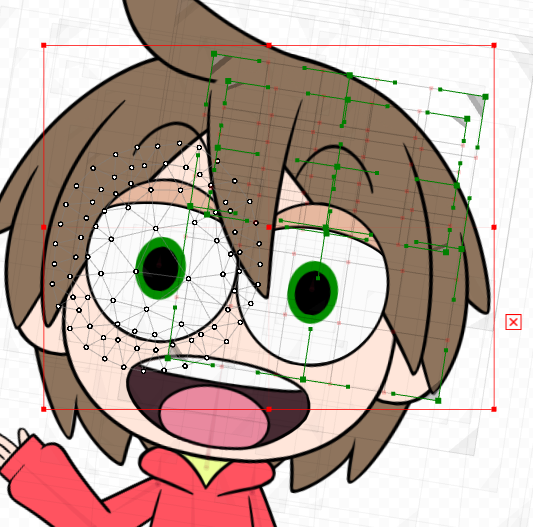 |
||||
| [Right-click] on the target object |
Open the context menu.
At the top of the menu, a tree view of the object’s parent-child hierarchy is displayed for selection. |
||||
| [Ctrl] + [right-click] on the target ArtMesh |
Opens the ArtMesh pop-up list.
|
||||
| After selecting ArtMesh deformer [Delete] key |
Deletes the selected ArtMesh deformer. | ||||
|
[E] key + [drag] to display the canvas in 3D [W] key + [drag] to display draw order in 3D [E] key/[W] key + [double-click] to reset each 3D display |
The [E] key + [drag] displays the canvas in 3D, and the [W] key + [drag] displays the draw order in 3D, allowing the user to visually check the overall draw order. This mode can be restored by changing the mode to [Display All].
Precautions |
||||
| Click [Show] menu -> [Hide selected state] |
When an object is selected on the canvas, the UIs (ArtMesh vertices, mesh lines, and deformer border lines) are hidden.
Shortcuts can also be set. |
Multiview
Clicking the “multiview” icon in the lower right corner of the View area allows you to display multiple views in the arrangement you desire.
Tabs can also be moved, added, and deleted within the View area.
See the “Multiview” page for more information on multiview.
Note: This is a limited function of the PRO version.
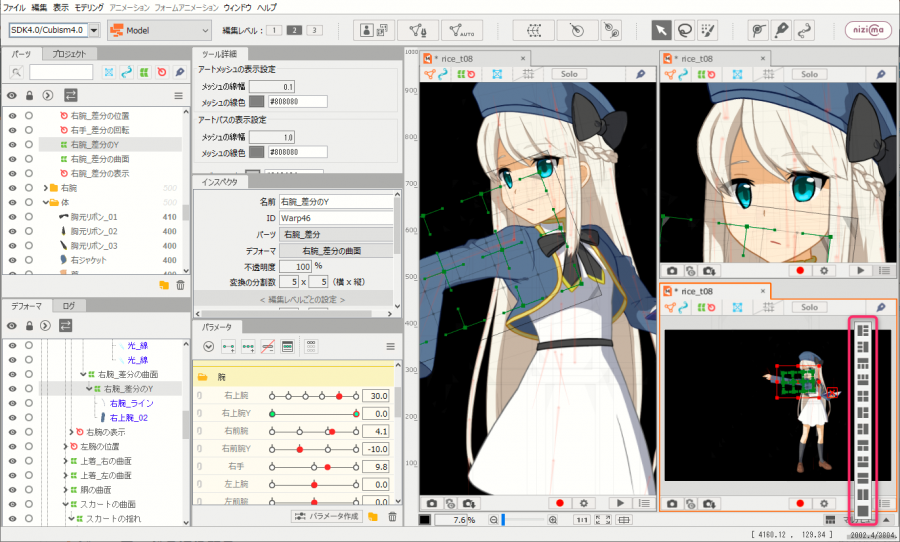
Multiple Model Displays
Multiple models can be loaded into the Editor and displayed simultaneously.
